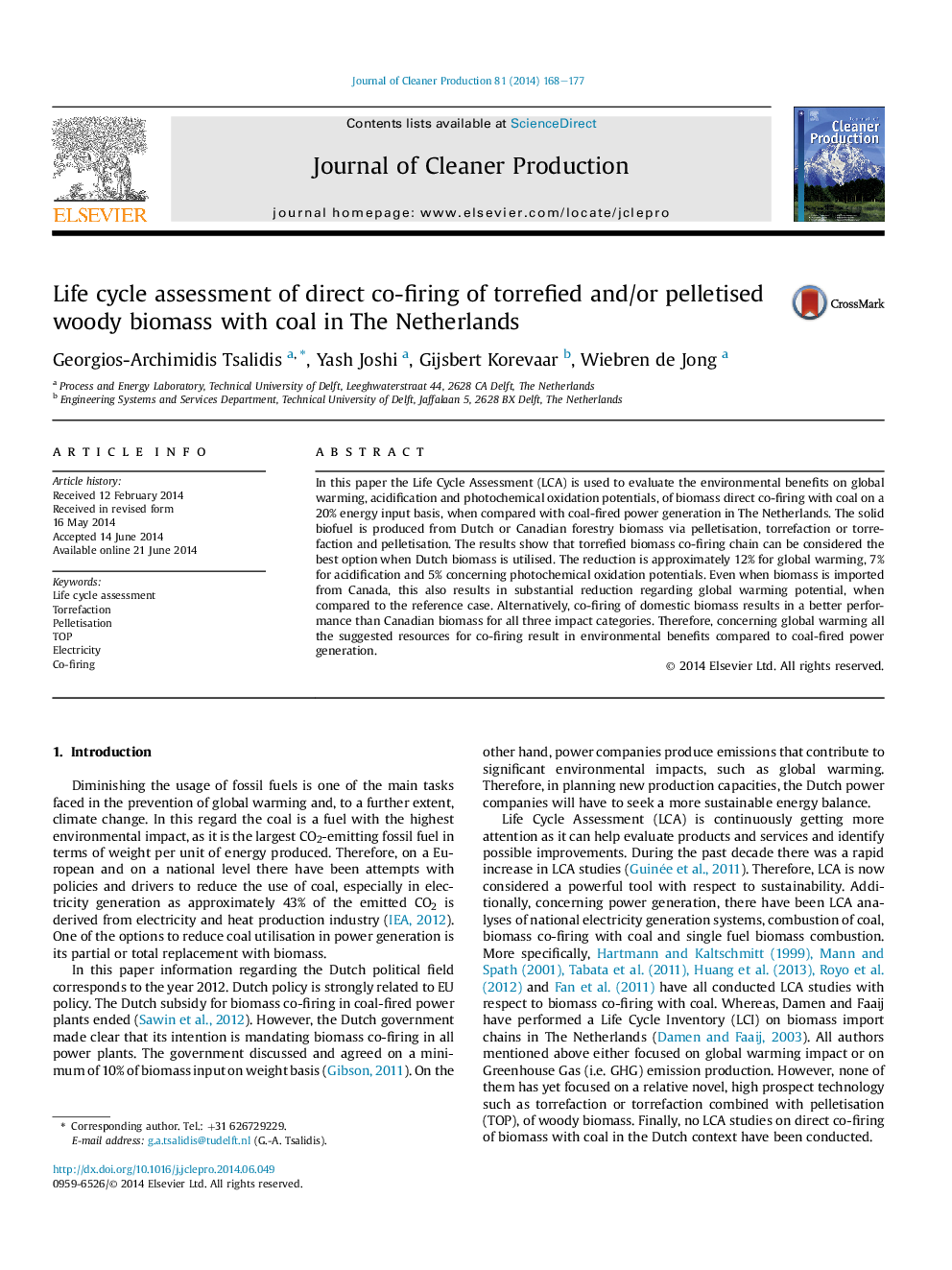| Article ID | Journal | Published Year | Pages | File Type |
|---|---|---|---|---|
| 8105811 | Journal of Cleaner Production | 2014 | 10 Pages |
Abstract
In this paper the Life Cycle Assessment (LCA) is used to evaluate the environmental benefits on global warming, acidification and photochemical oxidation potentials, of biomass direct co-firing with coal on a 20% energy input basis, when compared with coal-fired power generation in The Netherlands. The solid biofuel is produced from Dutch or Canadian forestry biomass via pelletisation, torrefaction or torrefaction and pelletisation. The results show that torrefied biomass co-firing chain can be considered the best option when Dutch biomass is utilised. The reduction is approximately 12% for global warming, 7% for acidification and 5% concerning photochemical oxidation potentials. Even when biomass is imported from Canada, this also results in substantial reduction regarding global warming potential, when compared to the reference case. Alternatively, co-firing of domestic biomass results in a better performance than Canadian biomass for all three impact categories. Therefore, concerning global warming all the suggested resources for co-firing result in environmental benefits compared to coal-fired power generation.
Related Topics
Physical Sciences and Engineering
Energy
Renewable Energy, Sustainability and the Environment
Authors
Georgios-Archimidis Tsalidis, Yash Joshi, Gijsbert Korevaar, Wiebren de Jong,
